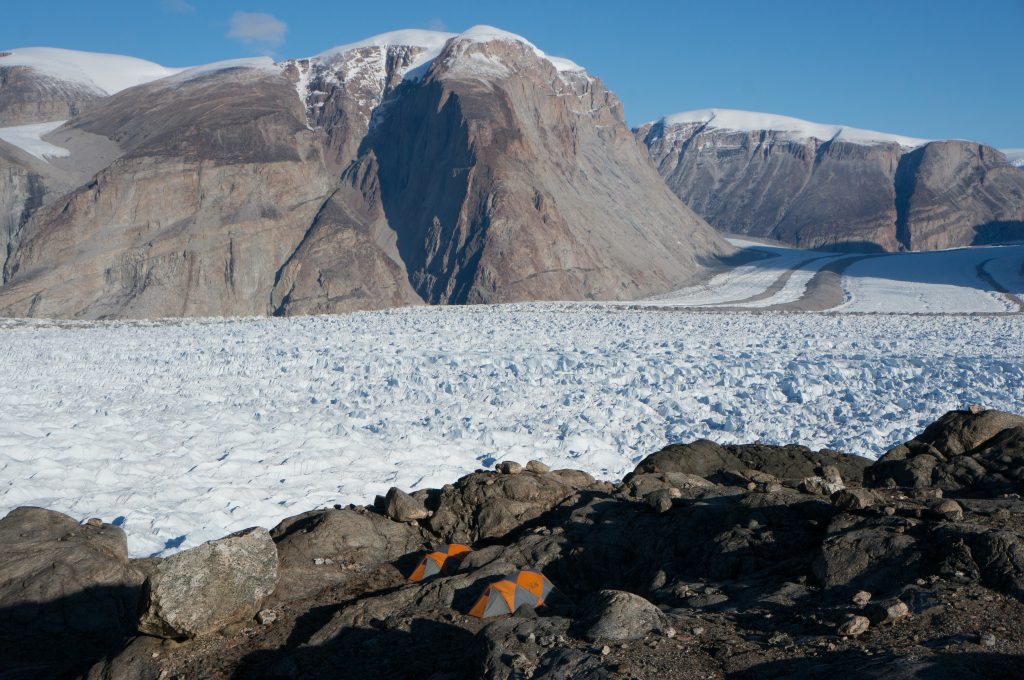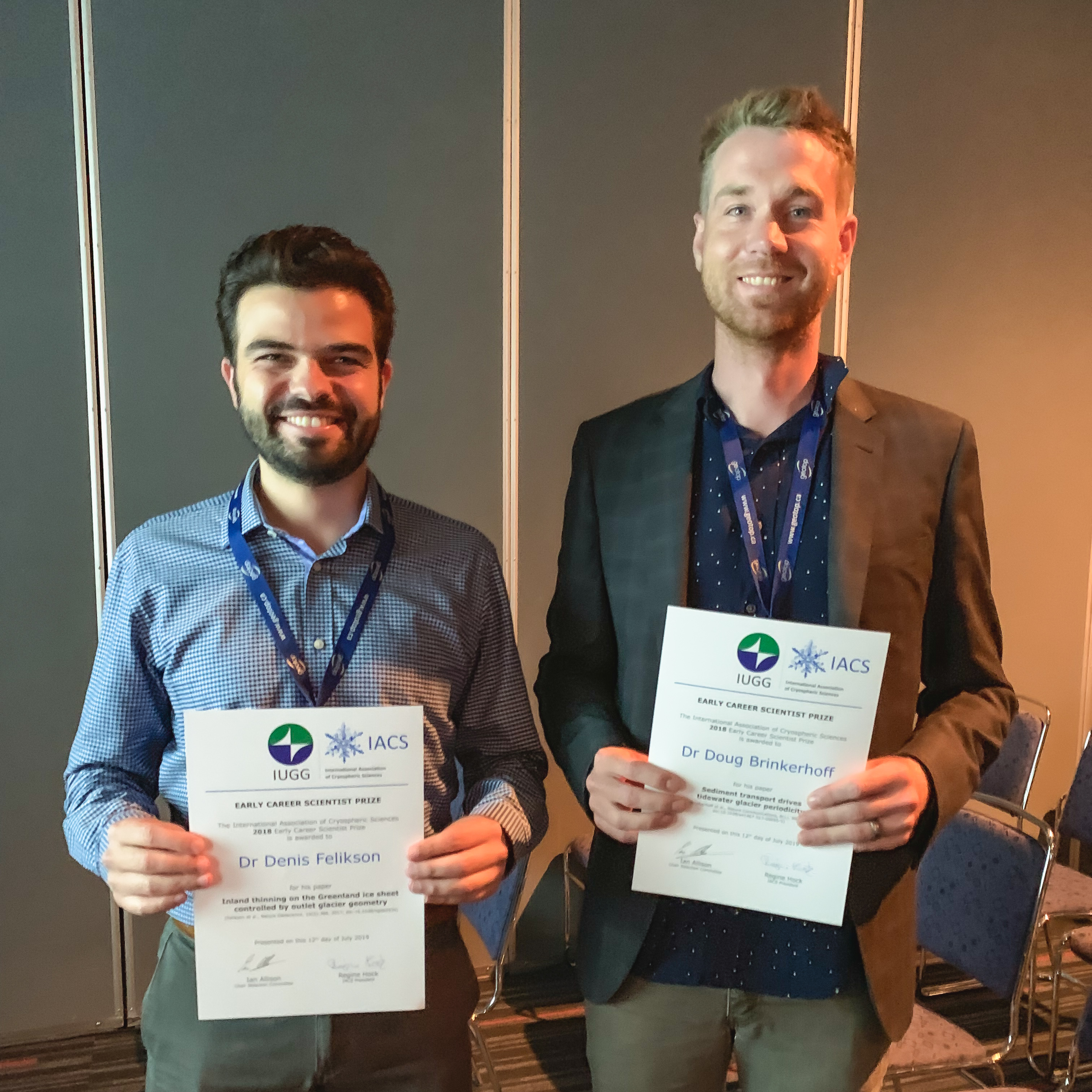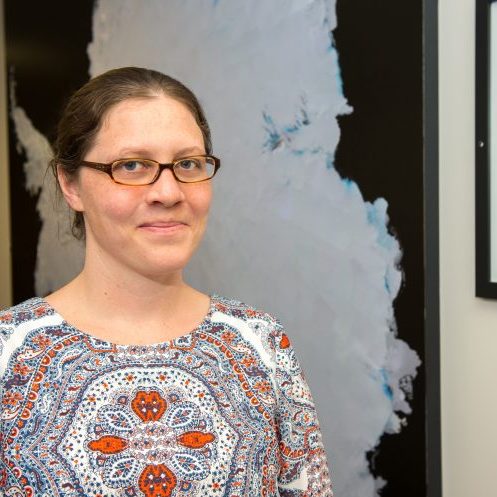
Denis Felikson, a former UT graduate student, has received an early career award from the International Association of Cryospheric Sciences (IACS) for research into glacier thinning that he conducted while working as a graduate research assistant at UTIG. Felikson graduated from the Department of Aerospace Engineering with a doctoral degree in 2018 and is now a postdoctoral fellow at NASA where his research is being used to predict future sea-level rise.
The award is presented every two years to two early career scientists who have published the best scientific papers on a cryospheric subject. This year’s winning papers demonstrate a growing trend in modern glaciology: crunching data to solve problems.
Felikson’s research combined theoretical physics with satellite observations of the Greenland ice sheet. His results will allow researchers to identify which glaciers are vulnerable by simply examining their shape.
Felikson said he was humbled to win the award, which includes a €1,000 cash prize.
“I’m very proud of this paper because it represents such a large and combined effort from all the authors,” said Felikson.
Sophie Nowicki, the senior NASA research scientist who nominated Felikson for the award, said that young researchers like Felikson are important for tackling societal problems like rising sea levels.
“I think it’s very important for young scientists to be recognized for their work and the new ideas they bring to the table,” she said.
“Denis fully deserves this award,” added Ginny Catania who co-supervised Felikson while he was working at UTIG. Catania, who is a senior UTIG research scientist and Professor at the Jackson School of Geosciences, said that her research group is continuing Felikson’s work and extending his analysis to the rest of Greenland and glaciers in Antarctica.
UTIG interim-Director Mrinal Sen congratulated Felikson on his achievement. “This award reflects the important strides our institution is making in glaciology and the study of the cryosphere,” said Sen who is also a Jackson School Professor and Jackson Chair in Applied Seismology. “We are proud of his success and look forward to seeing his future discoveries.”
Felikson’s story as a glaciologist began, surprisingly, in aerospace engineering. After a short stint working as a flight dynamics analyst, Felikson decided to go to grad school and do something more closely related with earth sciences.
The Center for Space Research (CSR) at The University of Texas at Austin stood out to Felikson.
“CSR are world leaders in satellite geodesy,” he said, “which is exactly the blend of aerospace engineering with applications in earth science that I was after.”
At UT, Felikson’s first supervisor was the late Bob Schutz, a highly respected professor of aerospace engineering.
“How I got into glaciology is actually quite a funny story,” recalled Felikson. “Bob Schutz was working with Ginny (Catania) on a project and advised me to enroll in her class.”
Felikson admits that at the time he knew nothing about glaciology and the cryosphere and wasn’t sure how the course would be relevant to his interests. After the first class, he soon changed his mind.
“The thing that struck me was how many important questions are still unanswered in glaciology,” he said.
“Ginny’s class motivated me to learn a lot more. When she taught us how much we still need to learn, I started seeing lots of exciting opportunities.”
Sadly, Schutz passed away in 2015. Felikson continued his Ph.D. at CSR but at the same time, decided to take his research in a new direction. Inspired by glaciology conversations he’d had with Catania he decided to join her research group where he met one of her postdocs, Tim Bartholomaus.
Bartholomaus had unearthed a 1960’s glacial flow theory conceived by pioneering British glaciologist and physicist, John Nye. At around the same time, Felikson was producing new high-resolution satellite observations of glacier elevations which, when combined with a similar 1985 data set, gave him an accurate measure of how much the Greenland ice sheet had changed since the 1980’s. Bartholomaus saw an opportunity to explain why some glaciers thinned quicker than others by combining Nye’s theory with Felikson’s observations. He suggested the project to Felikson who was more than happy to take it on.
“Denis has an engineering background so he was already really comfortable using differential equations to understand his observations,” said Bartholomaus. “He really latched on to the project and pushed it forward in a significant way.”
Felikson analyzed his observations of sixteen glaciers in West Greenland and matched their change with what Nye’s theory predicted. “This gave us a very simple way to calculate when and where thinning will occur based on the glacier’s shape,” said Felikson.
The study showed the four glaciers most susceptible to thinning and revealed that Rink Isbrae, a glacier thought previously to be stable, could thin over a very large region if it is forced to recede.
At almost three times the size of Texas, the Greenland ice sheet contains an enormous amount of water – if melted, enough to raise global sea levels by 23 feet. While such a scenario is unlikely within our lifetime, recent studies have shown that unless greenhouse gas emissions are immediately cut, the Greenland ice sheet will disappear entirely, and even with drastic action could still account for up to six feet of global sea level rise within 200 years.
Nowicki says there is still much to understand about the polar ice sheets and their contributions to sea levels. Forecasting how quickly they are melting is a very complex process which makes Felikson’s work all the more important. “At NASA, Denis has brought a different approach to tackling this problem that is key to gaining new insights,” she said.
“There are not many awards for young scientists, so I’m pleased Denis was selected for this one,” she added.
When his postdoc fellowship finishes in 2020, Felikson hopes to stay in the field of cryospheric sciences and find a faculty or research scientist position. He said he is grateful of the opportunities UT offered him during his time in Austin.
“It was great to be around such a diverse group of researchers at UTIG,” said Felikson. “Every day you get perspective from people doing research in polar, planetary, marine and seismic.”
“I consider myself really lucky to be in this field,” he added, “it was the luck of meeting and working with Ginny and Tim at the right time that brought me where I am.”
The IACS Early Career Award recipients were recognized at a ceremony during the IUGG General Assembly in July 2019.



